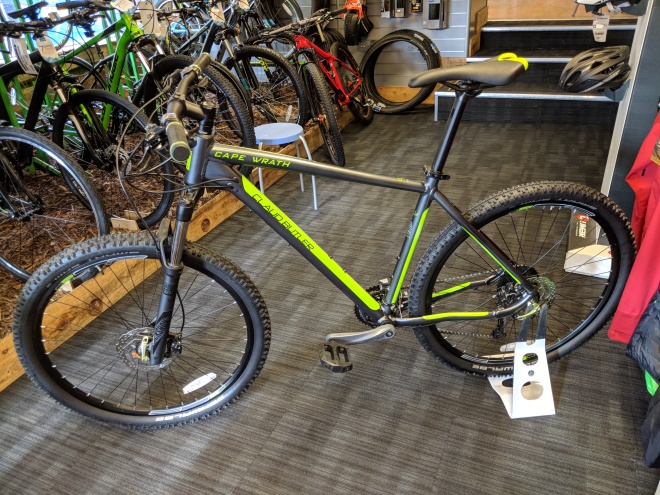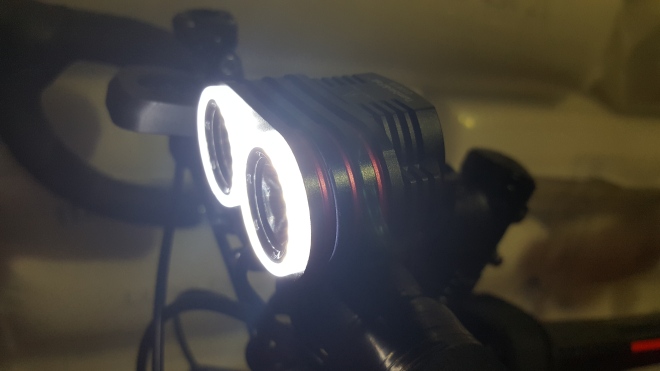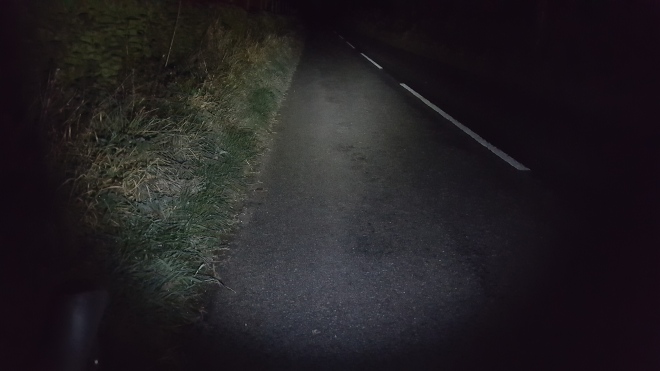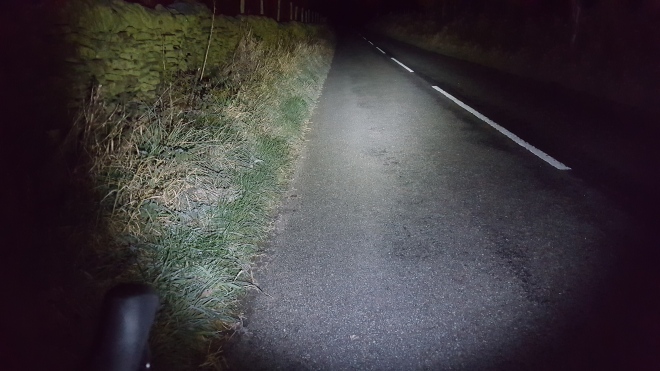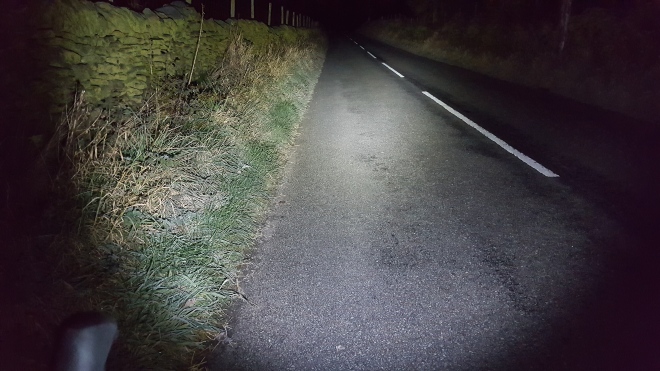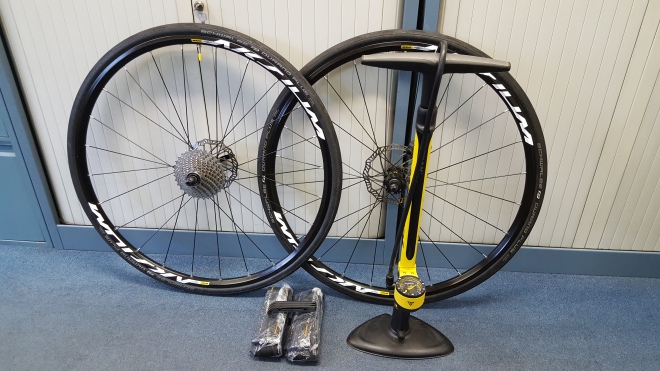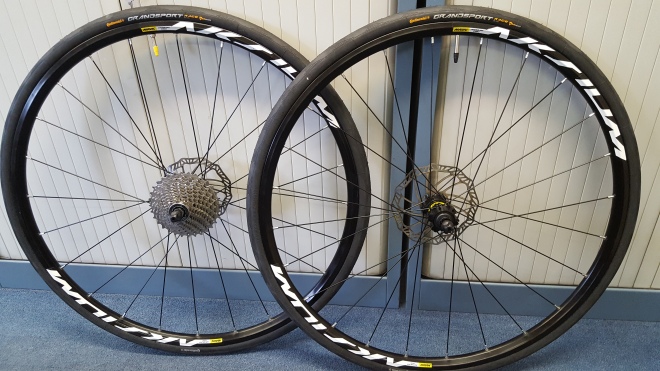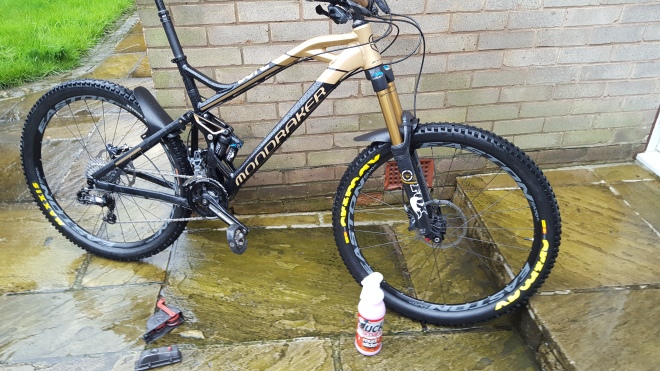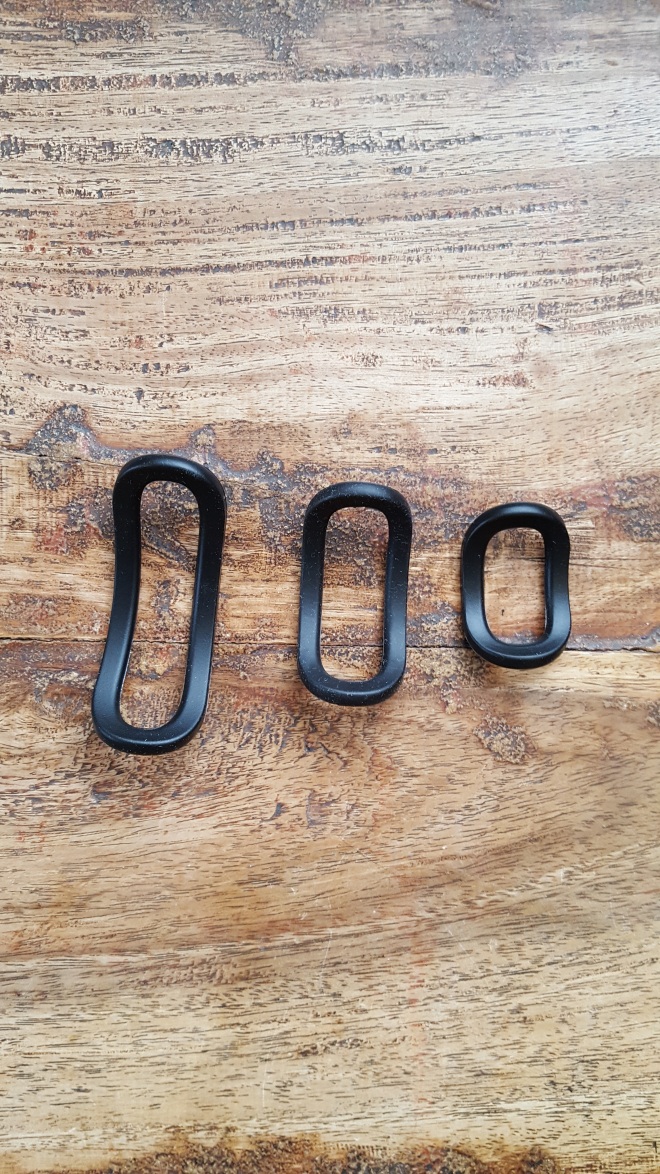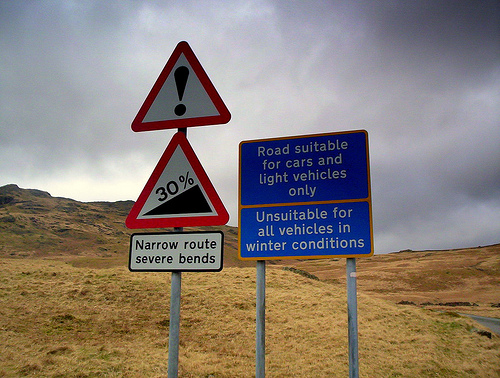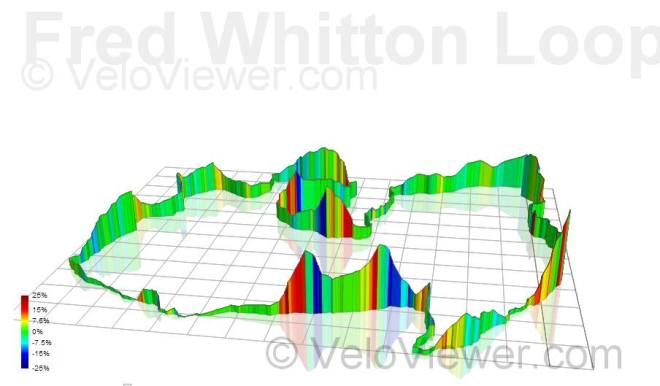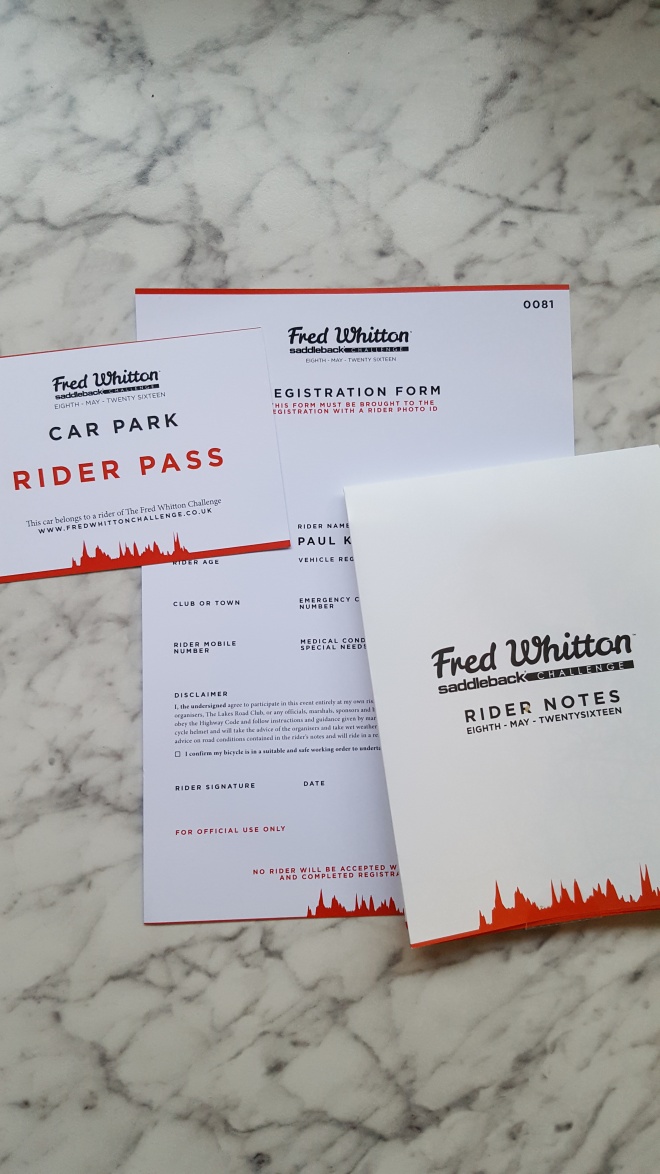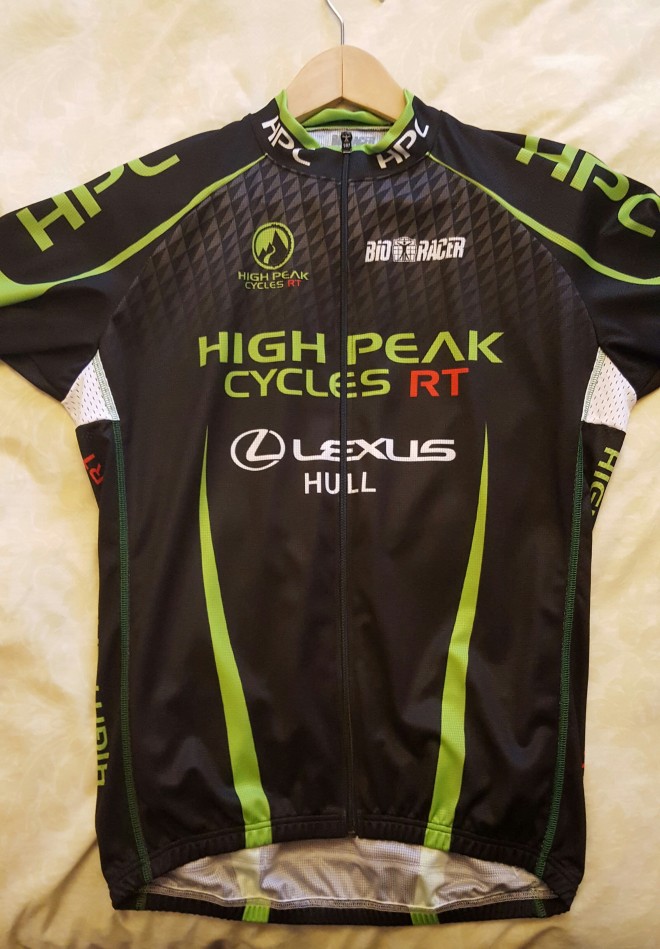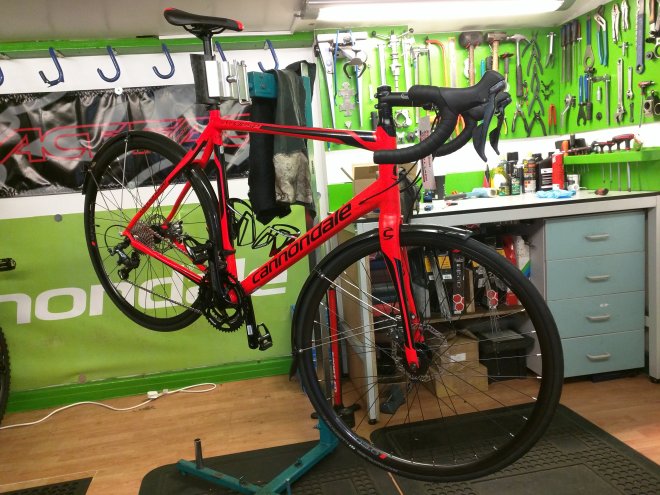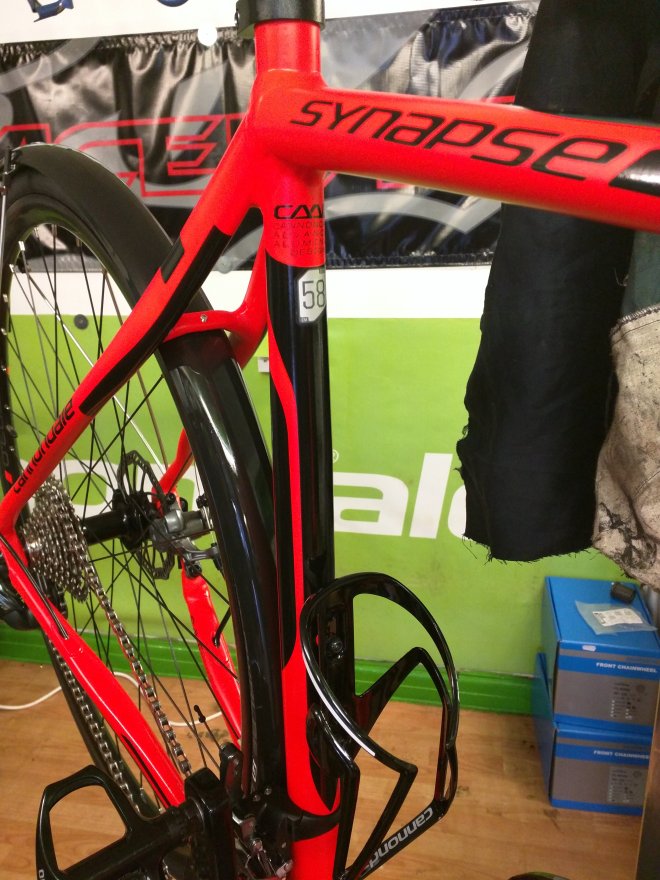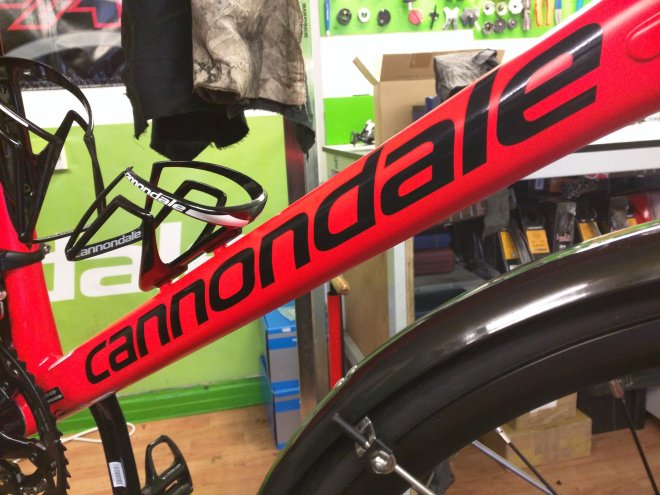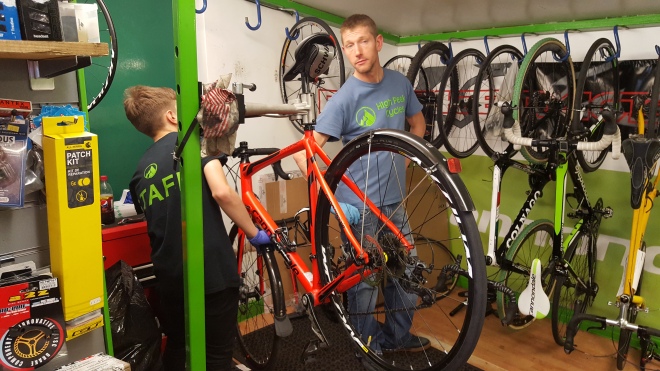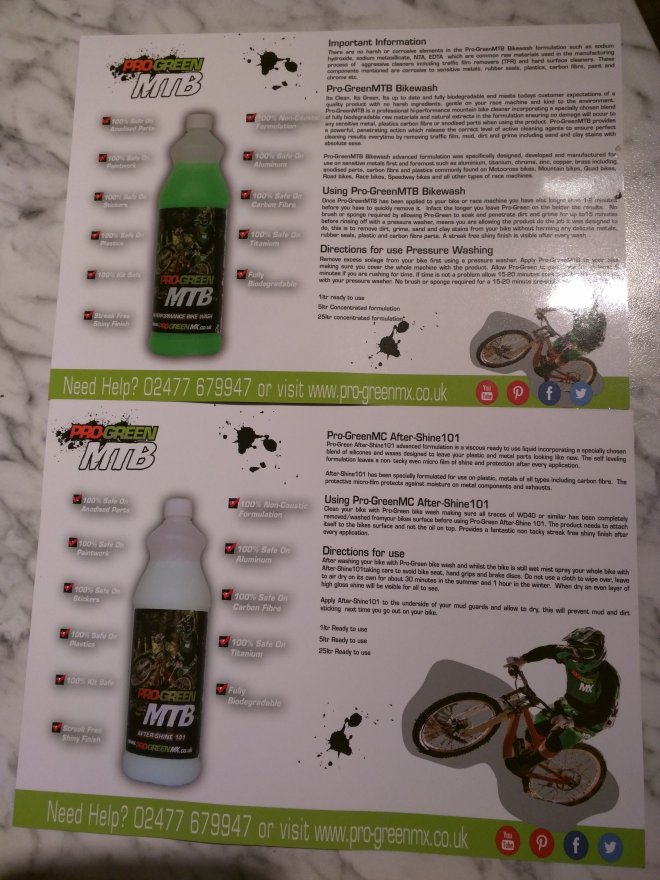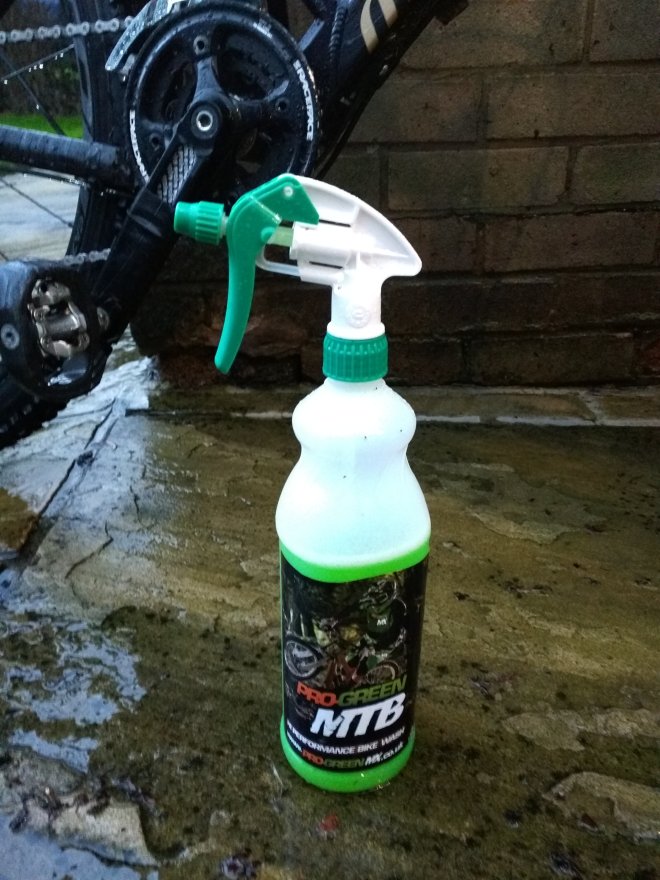In June 2017 I/we (a team of four) have entered ‘Mountain Mayhem’ which is a 24 hour cross country race held every year in Gatcombe Park. AFTER getting our entry confirmed we worked out that each one of us would be doing at least two or three ‘night laps’. As Gatcombe is a mixed wooded course which takes 45 mins to 1 hour per lap depending on conditions (and rider!) then lights I have (an old Lupine Edison HID and a Hope R2i) would fall well short of burn time with not enough time between laps to recharge. We needed a powerful light with a burn time of over 2 hours 30 mins from one charge to be safe.
One of the team (Dave Robinson) runs his own business (Garage Tool Services) and sells LED Lenser products. He got a couple of LED Lenser XEO19R Lights so that we could see if they were suitable. I got one to test and review and have now run it for two weeks on my work commutes (road bike).
The LED Lenser light is sold in to different markets so comes with an array of accessories enabling it to be used for biking, walking, running or pretty much any activity you can think of. Full retail price is £249.
First job is to charge the battery pack up. Red is bad, blue is good!
Once charged I used the bike (bar) accessory to mount the light. I preferred this to helmet mount for road use as it could be pointed down toward the road to avoid dazzling other road users. I taped the bike first …
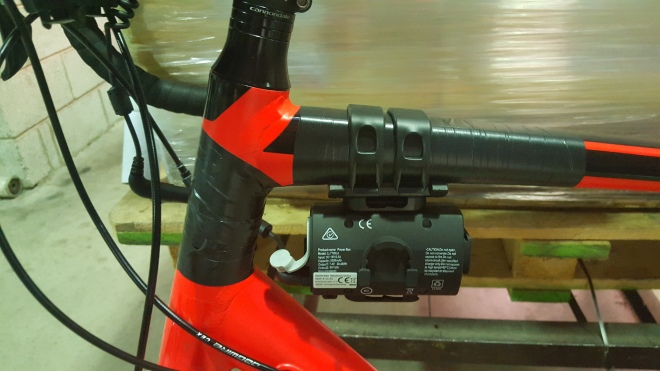
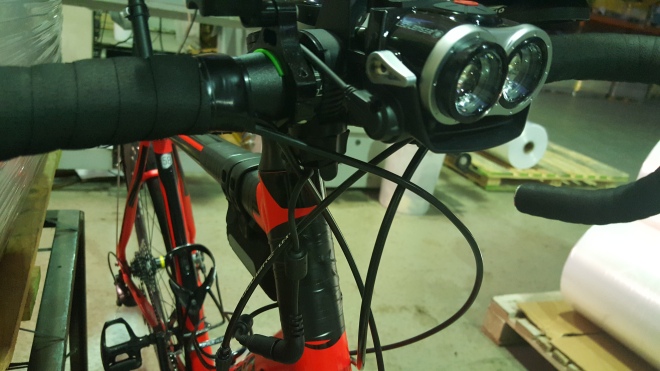
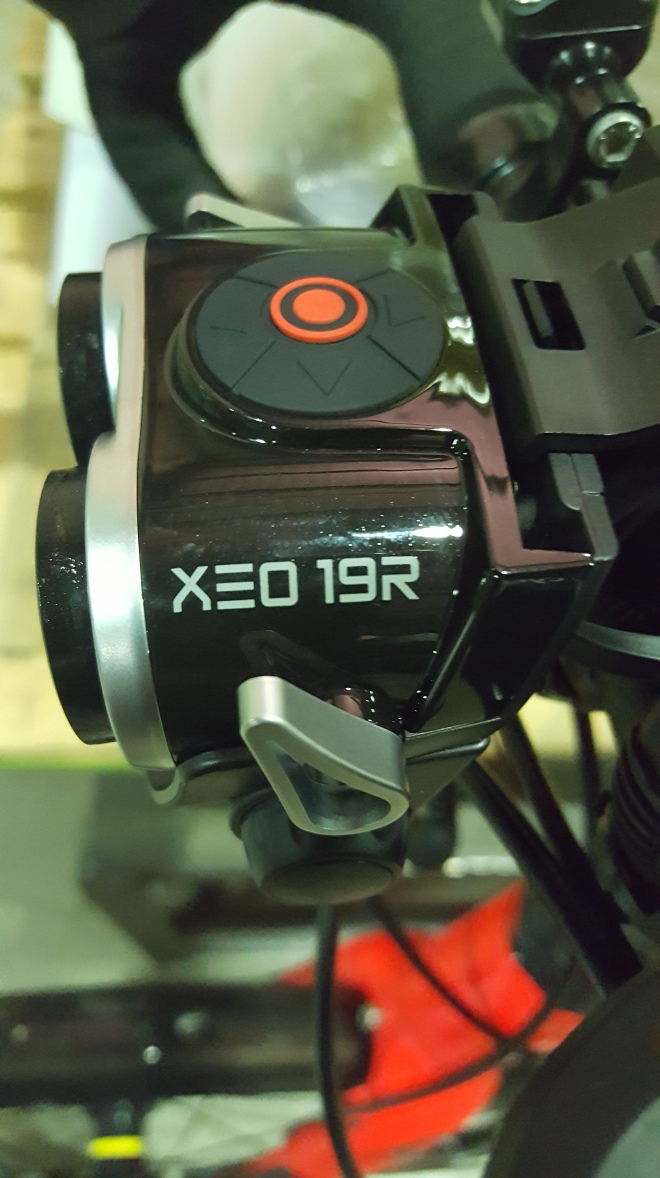
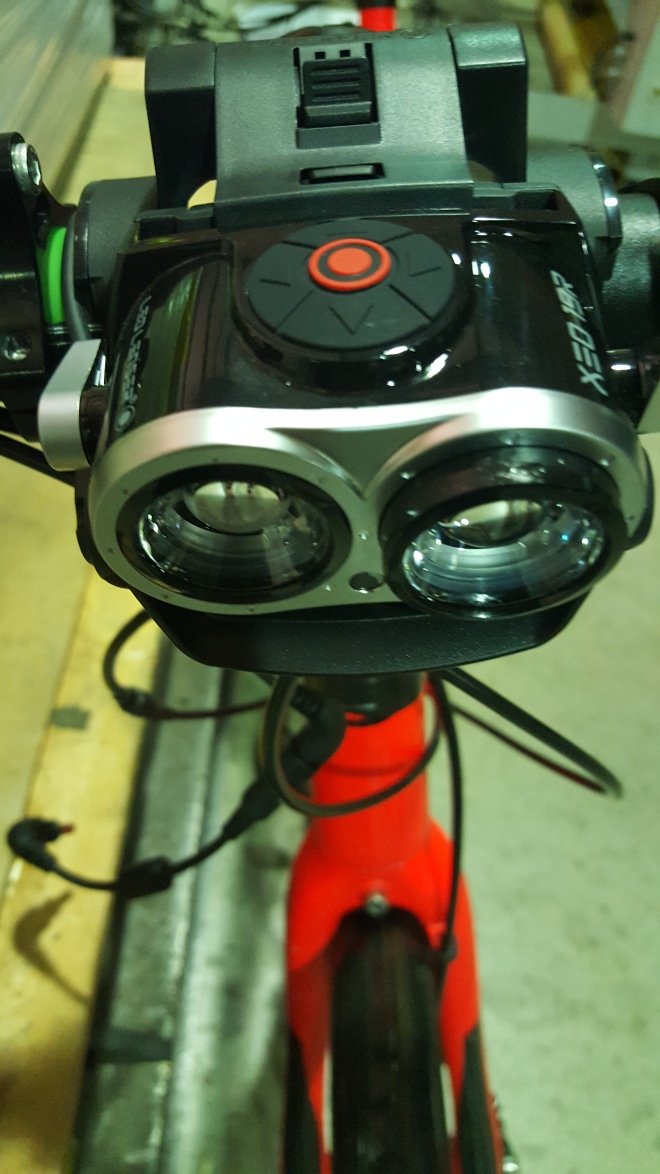
Everything fits easily and is very secure. The two silver levers (one each side of the light) allow you to alter the focus of each light. Move forward for a ‘spot’ light or back for a very broad spread of light.
The multi button on top of the light allows you to control the lights either together (pressing the orange central button) or separately (left button for left light, right button for right light). The rear button (if pressed for five seconds) locks the unit for travel purposes. The front button (if pressed for two seconds) activates ‘BOOST’ mode which is a eye watering 2,000 lumens.
I had a quick play with the light to get used to setting it up. It’s quite simple with the light to hand…
One press puts the lights(s) on low setting. This is approx. 300 lumens. Two presses puts on high setting which is approx 1000 lumens. Three presses puts on ‘Optisense’ mode. This is ideal for walking as it senses when you look down and dips the light output (for looking at a map or GPS). Four presses puts on ‘flash’ mode. Five presses switches off.
The are three other settings via the button. ‘Lock’ and ‘boost’ have been explained ^^ above. The last is ‘Variable’. If you hold central button (for both lights) or either left button or right button for two seconds the lights(s) will allow you to decide how bright you want them. Lowest setting is 150 lumens upto 1000 lumens.
After ten minutes of playing around the myriad of settings all make sense and from there on it’s simple to set the light up exactly as you want it. For me, using on roads at 4.30am in the Peak District (some unlit) I decided to try two different settings.
This is just off Woodhead Road at 5am in the morning. No street lights, so literally pitch black. A great place to compare the Lenser settings. Daft I know, but to get an idea of just how dark it is this is a photo taken just before I switched the Lenser on …

I had the left light on setting two – 1000 lumens (and spotlight). I had the right light on setting one – 300 lumens (and broad spread).
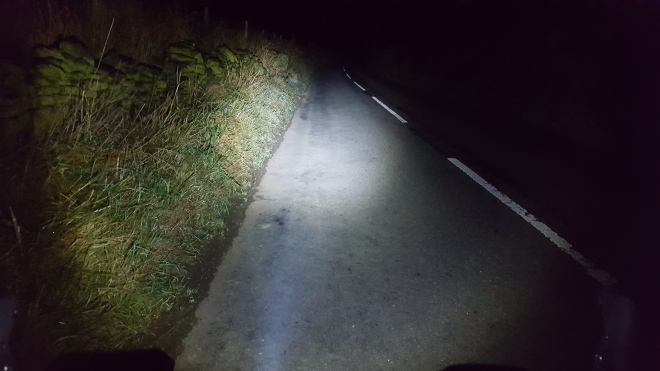
This setting was perfect for my country commute and gave a burn time of five and a half hours. I found this ideal as it gave plenty of forward light when moving fast downhill (30+ mph) or on unlit roads with the 1000 lumen spot, yet lots of peripheral light from the 300 lumen broad light. A great combination.
I tried both lights on 1000 lumens. One Spotlight and one broad light. You can see the additional light. In truth this was too bright when I got onto roads with some street lighting despite the Lenser being tilted down toward the road.
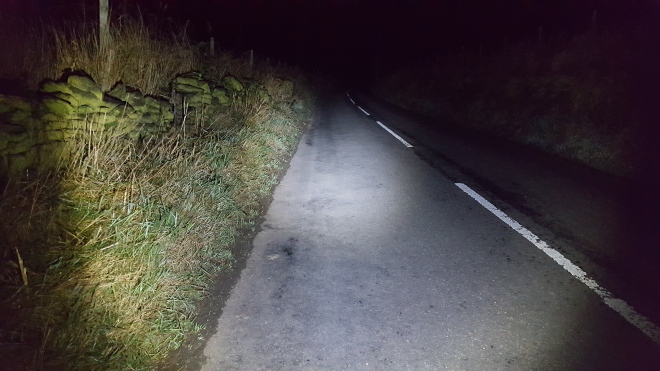
This setting gave a burn time of just under 3 hours … which also included me playing with the light to get used to settings and testing ‘boost / 2000 lumen’ mode quite a few times.
Speaking of which this is the 2,000 lumens. The picture doesn’t so it justice. I haven’t yet got a burn time for this as I will need to test it off road. It’s far too bright for using on road and will see me getting abuse!
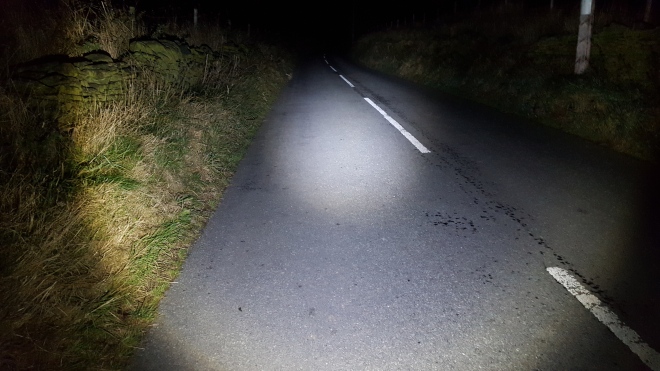
Overall the power of the light and burn times have been very impressive. I still intend to use the helmet mount for an off road night ride (I’ll update the review with that), but I’m confident the light is good enough for our Mountain Mayhem race. One charge will be sufficient for the two or three night laps.
I did run the Lenser alongside my Hope R2i to compare. Hope say the R2i is 1000 lumen. It has been measured above that (1,300 to 1,400) and is a perfect commute light (as it’s battery is built in so no additional pack). With the Lenser set on 1000/1000 lumen the Hope was enveloped and added nothing. At these settings the Hope would run out after one hour and the lenser would last for three hours.
It’s easy to see how the Lenser can run for 10+ hours on one charge by cycling through the settings. One light on low (300 lumen) and one on flash would be fine for most urban requirements and would increase burn time significantly.
Downsides – Only one. There are no obvious warnings that the light is running low. Not a biggie as you soon get used to burn times and it’s very simple to recharge after every ride, but worth a mention.
Would I recommend the Lenser – Yes. I’ve been impressed enough to buy the unit I’m testing.
